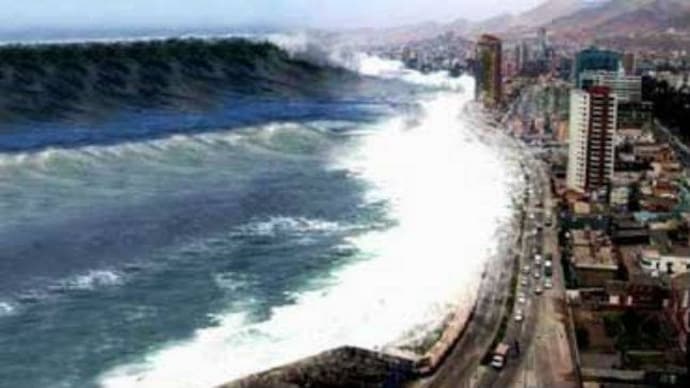10 facts about the 2004 Indian Ocean Tsunami with the power of 23,000 atomic bombs
The 2004 Indian Ocean tsunami killed over 230,000. Here are the important facts you should know about the natural calamity.

It was the day after Christmas. Most people were sleeping after merrymaking all night when two continental plates collided under the Indian Ocean and caused the biggest and most destructive cyclone of recent times.
On December 26, 2004, the world stood witness to the wrath of nature as the massive tsunami waves crushed against the shores of South Asia killing more than 2,30,000 people.
On its anniversary, let's take a look at 10 facts about the 2004 Indian Ocean Tsunami:
1. The 2004 Indian Ocean tsunami was caused by an earthquake that had the equivalent energy of 23,000 Hiroshima-type atomic bombs.
2. The magnitude of the earthquake had been estimated at 9.1 on the Richter Scale. This was one of the highest ratings the Richter Scale had ever shown in recent history.
3. The earthquake hit Earth's surface at around 160 kilometres west from northern Sumatra, Indonesia.
4. The two tectonic plates under the Indian Ocean, the Indian Plate and the Burma Plate, collided at the Sunda Trench creating the highest magnitude earthquake in 40 years, which triggered the tsunami.

Image source: Fludaskoli
5. Indonesia, a country that lies between the Pacific Ring of Fire, was affected the worst. Around 167,000 people were estimated to be dead while more than 500,000 houses were washed away.
6. The total death count of the 2004 Tsunami mounted up to 2,30,273 people. In India, states like Andhra Pradesh and Tamil Nadu were the worst affected. Around 18,045 were estimated to be dead in the country.

Image source: Abc
7. In order to prevent such a catastrophe, November 5 has been designated as World Tsunami Awareness Day by the United Nations.
8. The day after Christmas is referred to as the Boxing Day. Thus, the 2004 Indian Ocean tsunami has also been known as the Boxing day Tsunami.
9. The Indian Ocean tsunami waves travelled more than 5,000 kilometres to the East coast of Africa and still arrived with sufficient force to kill people and destroy property.
10. The tsunami not only took a toll on lives, it also damaged the environment along the Indian Ocean belt. In the Maldives, 16 to 17 coral reef were left completely without fresh water as salt water polluted the area, which could be rendered uninhabitable for decades.
Interested in General Knowledge and Current Affairs? Click here to stay informed and know what is happening around the world with our G.K. and Current Affairs section.
To get more updates on Current Affairs, send in your query by mail to education.intoday@gmail.com
